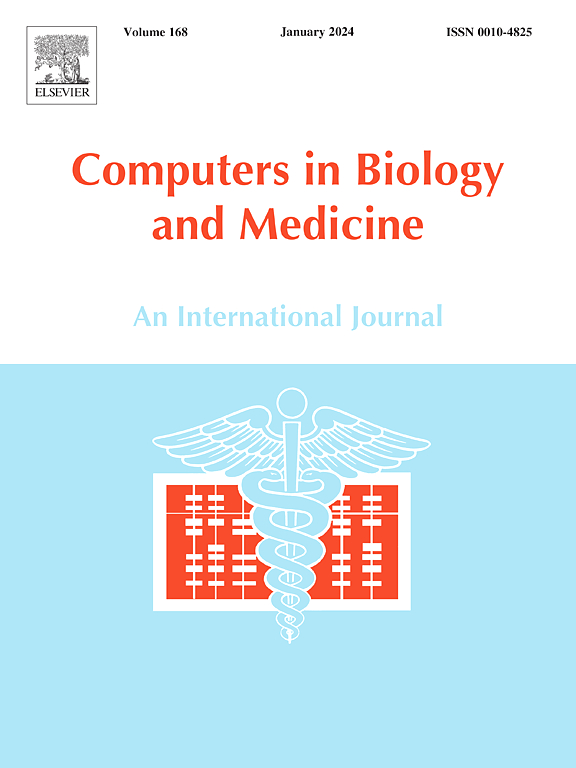Lightweight triangular mesh deformable reconstruction for low quality 3D organ models: Thickness noise and uneven topology
IF 7
2区 医学
Q1 BIOLOGY
引用次数: 0
Abstract
Lightweight triangular mesh models have great potential for real-time 3D visualization of lesions during minimally invasive surgery (MIS). However, the blurred tissue boundaries, high imaging noise, and unoriented points in medical images seriously affect the accuracy and topological quality of surface reconstruction, which can lead to inaccurate lesion localization. In this paper, we present a robust and high-topology-quality triangular mesh reconstruction method that aims to provide a deformable expression model for real-time 3D visualization during surgery. Our approach begins by approximating the model prototype under the guidance of an unsigned distance field by simulating inflation. Then, we introduce a variance-controlled cylindrical domain projection search (VC-CDPS) method to achieve the final surface fitting. Additionally, we incorporate topology optimization into the iterative reconstruction process to ensure smoothness and good topology of the reconstruction model. To validate our method, we conduct experiments on a geometric model with high noise and a human organ model manually segmented by novice doctors. The results demonstrate that our reconstructed model exhibits better surface quality and noise immunity. Furthermore, we conduct a comparison experiment of model deformation and propose a metric to measure the topological quality of the model. Through in vitro tissue experiments, we explored the relationship between topological quality and deformation accuracy. The results reveal a positive correlation between deformation accuracy and topological quality.
低质量三维器官模型的轻量级三角网格可变形重建:厚度噪声和不均匀拓扑
轻量级三角形网格模型在微创手术(MIS)中对病变进行实时三维可视化具有很大的潜力。然而,医学图像中组织边界模糊、成像噪声大、无定向点等问题严重影响了表面重建的精度和拓扑质量,导致病灶定位不准确。在本文中,我们提出了一种鲁棒性和高拓扑质量的三角形网格重建方法,旨在为手术期间的实时三维可视化提供可变形的表达模型。我们的方法首先通过模拟暴胀,在无符号距离场的指导下近似模型原型。然后,引入方差控制的圆柱域投影搜索(VC-CDPS)方法来实现最终的曲面拟合。此外,我们将拓扑优化融入到迭代重建过程中,以确保重建模型的平滑性和良好的拓扑结构。为了验证我们的方法,我们在高噪声的几何模型和新手医生手工分割的人体器官模型上进行了实验。结果表明,重构模型具有较好的表面质量和抗噪性。此外,我们进行了模型变形的比较实验,并提出了一个度量模型拓扑质量的度量。通过体外组织实验,我们探索了拓扑质量与变形精度之间的关系。结果表明变形精度与拓扑质量呈正相关。
本文章由计算机程序翻译,如有差异,请以英文原文为准。
求助全文
约1分钟内获得全文
求助全文
来源期刊

Computers in biology and medicine
工程技术-工程:生物医学
CiteScore
11.70
自引率
10.40%
发文量
1086
审稿时长
74 days
期刊介绍:
Computers in Biology and Medicine is an international forum for sharing groundbreaking advancements in the use of computers in bioscience and medicine. This journal serves as a medium for communicating essential research, instruction, ideas, and information regarding the rapidly evolving field of computer applications in these domains. By encouraging the exchange of knowledge, we aim to facilitate progress and innovation in the utilization of computers in biology and medicine.
 求助内容:
求助内容: 应助结果提醒方式:
应助结果提醒方式:


